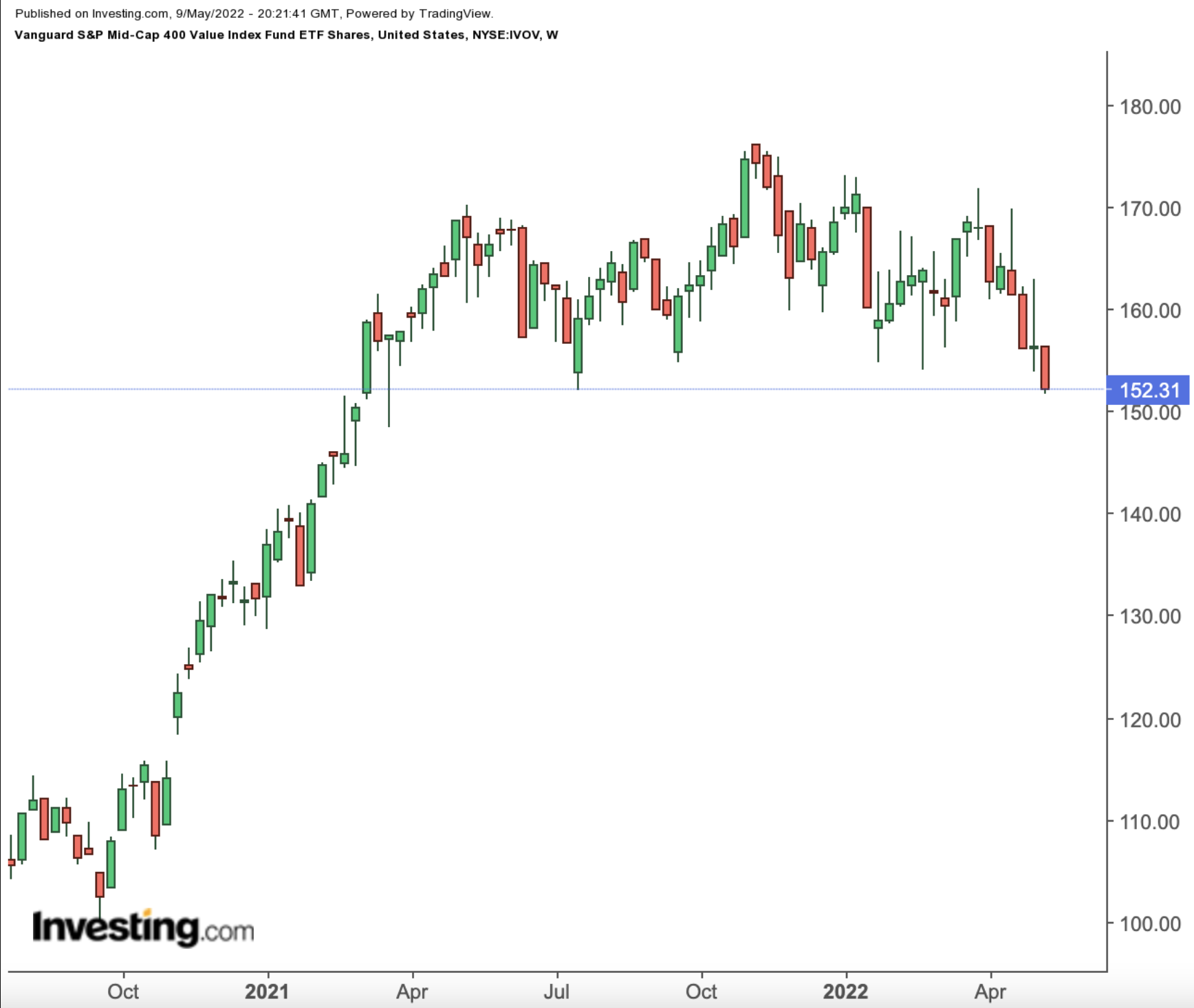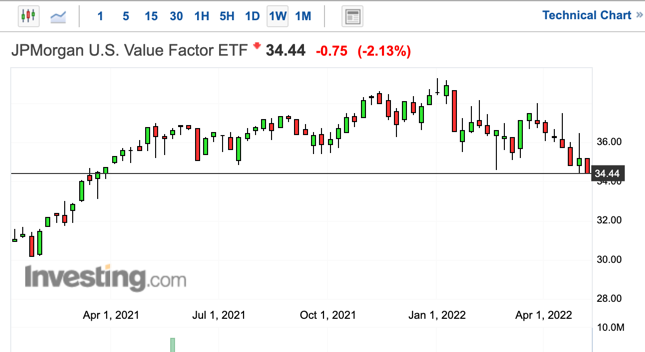Bear markets often create opportunities for seasoned investors as declines in share prices lead to new value investment options. So far this year, the S&P 500 and the NASDAQ 100 have lost 14.5% and 23.4%. Put another way, broader markets are beginning to offer suitable entry points.
Finding quality shares trading below their intrinsic value can become a critical and lucrative long-term strategy for seasoned investors. The intrinsic value refers to a stock’s actual value, or in other words, the measure of what a stock (or any asset for that matter) is really worth.
According to Warren Buffet, intrinsic value:
“…offers the only logical approach to evaluating the relative attractiveness of investments and businesses.”
Quantitative metrics usually help determine whether a stock offers value. Examples of ratios most commonly used include price-to-earnings (P/E), price-to-book value (P/B), price-to-sales (P/S), price-per-earnings-to-growth (PEG), debt-to-equity (D/E) or free cash flow (FCF).
What those metrics mean, or how to interpret them, requires more research and typically depends on the industry. The InvestingPro website can rank values for stocks, their peers, and the industry. So, a P/E of around 20x for a tech stock might mean it potentially offers value.
However, the same argument does not necessarily apply to shares of utilities, where we see lower ratios. The NYU Stern School of Business provides an updated list of P/E ratios for different sectors in the US.
Today’s post focuses on value stocks and presents two exchange-traded funds (ETFs) that invest in them:
1. Vanguard S&P Mid-Cap 400 Value Index Fund ETF Shares
- Current Price: $152.32
- 52-week range: $151.77 - $176.31
- Dividend Yield: 1.94%
- Expense ratio: 0.15% per year
Our first fund, the Vanguard S&P Mid-Cap 400 Value Index Fund ETF Shares (NYSE:IVOV), offers exposure to mid-cap US value companies from the underlying S&P Midcap 400 Index. The names are selected based on three factors, including earnings/price, book/price, and sales/price ratios.

This passively managed fund was first launched in September 2010. It currently holds a portfolio of 295 stocks, where the top 10 names comprise roughly 9% of $943 million in net assets.
Industrials have the largest slice with 19.40% in sectoral allocations. Next come financials (17%), consumer discretionary (12.70%), real estate (11.30%), and information technology (10.40%).
Leading holdings include Medical Properties (NYSE:MPW), a real estate investment trust (REIT) specializing in healthcare facilities; financial services stock First Horizon National (NYSE:FHN); property and casualty insurance name Alleghany (NYSE:Y); metal service group Reliance Steel & Aluminum Co. (NYSE:RS); and Aecom Technology (NYSE:ACM), which provides infrastructure consulting services.
IVOV came under pressure after hitting an all-time high in November 2021. The fund has lost around 9.6% since January and 9.7% over the past 12 months. Trailing P/E and P/B ratios are 14.0x and 1.9x.
Although the current environment means grey clouds over Wall Street, mid-cap value stocks have historically benefited against a backdrop of high inflation and increasing interest rates. Thus, investors with a horizon of three to five years could consider researching IVOV further.
2. JPMorgan U.S. Value Factor ETF
- Current Price: $34.44
- 52-week range: $34.41 - $39.27
- Dividend yield: 2.31%
- Expense ratio: 0.12% per year
Next up on our list is the JPMorgan U.S. Value Factor ETF (NYSE:JVAL), which provides diversified access to large-cap US value companies from the Russell 2000 Index. The fund holds 340 holdings selected by relative valuation metrics, including book yield, earnings yield, dividend yield, and cash flow yield.

JVAL started trading in November 2017. The top 10 names comprise close to 17% of $524.92 million in net assets. With regards to sectoral exposure, technology leads with 27.3%, followed by consumer discretionary (14.8%), healthcare (13.5%), industrials (12.6%), and financials (10.6%).
Among those are UnitedHealth Group (NYSE:UNH); Apple (NASDAQ:AAPL); Exxon Mobil (NYSE:XOM); Microsoft (NASDAQ:MSFT), and Johnson & Johnson (NYSE:JNJ).
We believe JVAL deserves to be on the radar screen of value investors. JVAL hit a 52-week low yesterday and is down to 10.3% since the start of 2022. Trailing P/E and P/B ratios stand at 13.10x and 2.35x.
